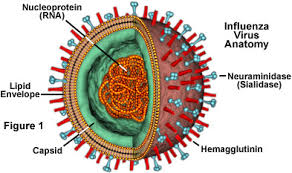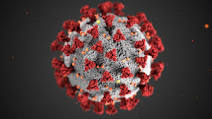Day 81 Coronavirus Pandemic
Every day we learn more about what we need to do to help cope with the coronavirus pandemic. This is Day 81. It’s Easter. Masks are now recommended and social distancing is a must. Read about California Tap Room’s novel way of dealing with social distancing and still staying in business.
Happy Easter 2020
The Reverend Georges Nicoli celebrated Holy Thursday Mass by live streaming on Facebook. He had pictures of his parishioners taped to the empty Notre Dame de Lourdes Church in Bastia, Corsica, France.
Unemployment
A staggering 16.8 million Americans lost their jobs in just 3 weeks.
UK Prime Minister Update
British Prime Minister, Boris Johnson, was moved out of intensive care at the London Hospital where he’s being treated for the virus.
Social Distancing is a Must
Governments warned that hard-won gains against the coronavirus pandemic was not be jeopardized by relaxing social distancing over the weekend regardless of Easter.
Masks Recommended for Urgent Care Workers
Under new orders by County Health officials in San Diego, food service, child care providers, and people who work in banks will be required to wear facial coverings while on the job beginning Monday. This includes county public transport workers employees who work in grocery stores, pharmacy, convenience stores, gas stations and restaurants.
Generally speaking, officials have urges but are not ordering everybody to wear some sort of fabric facial covering when leaving their homes.
Amazon is Hiring
Amazon has announced plans to hire a hundred thousand additional warehouse workers and drivers as a result of the huge increase of home shopping demands.
The Most Common Purchases Online
Here’s the list that most people have bought. New pets, junk food, exercise equipment, video games, inflatable jacuzzis, board games, puzzles, books, children’s toys, musical instruments, kitchen gadgets and online self improvement and self-help programs. Yes, everyone is looking to find ways to help reduce stress and anxiety .... wanting to lessen the effect of the uncertainty that we feel everyday.
Innovation at it’s Best
California Tap Room in North Park, San Diego is using a special device that is a kind of a trolley system that they are using to deliver pretzels and beer to customers at a safe distance that is 8 feet away.
The delivery device is made from an old oak drawer, the foot pedal, rope and party horns. This is what happens. When the customer come to pick up an order, they press on the foot pedal. This blows several party horns and alerts the staff. The server uses the wheel to slide the order from the counter window to the customer 8 feet away in 6 seconds.
Fans of the tap room’s trolley are calling it a genius on social media. In fact, the idea originated from boredom, says employee Nate Huckabone.
News and photographs taken from San Diego Union Tribune
Helpful Hints on Relaxation Practice at Home
Relaxation Practice at Home
Here are some helpful hints on relaxation practice at home. You will really benefit from introducing a regular, consistent practice. Even though there is so much uncertainty in our world today, with literally, no way of being to anticipate what tomorrow holds, you will feel a whole lot better inside you by incorporating relaxation practice into your daily routines.
1 Decide on a time of Day
Be realistic about when relaxation can fit into your schedule. What I do, is wake up earlier in the morning, 20 minutes before the actual time I need to get out of bed and start my day. That way my daily relaxation practice is taken care of and I don’t need to think about it again for the day, unless I feel like devoting another 20 minutes to repeat it. Can you wake up your desired amount of time first thing in the morning?
Or how about turning off the TV a little earlier every night? This could be the second time you practive eliciting a relaxation response, or the first. What ever you prefer — simply find a time that works best for you.
And, if its a challenge to remembering to do it, how about setting a reminder on your phone?
2 Select How long you want to do the relaxation
What works for you? It may be different every day … or each time you do it in one day. Don’t set your goals to high and try an hour right from start, for instance. I advise 20 minutes, however, that too, may feel too long for you. Rather think about what length of time that works for you. It’s far better to start with a shorter time and be consistent with your practice, rather than attempting longer time, sporadically. Over time you may be able to feel comfortable with increasing the amount of time you practice.
3 Choose Your Place
Relaxation can be done anywhere. I suggest sitting in a chair, however you can choose to be on the floor, maybe using a cushion to sit on, laying in bed or on the sofa, or even outside. Do wear comfortable clothing. Also try to limit any distractions as much as possible. Anything like physical clutter or outside noise can be an issue. If you can, think about making a ‘dedicated space’ if you can.
4 Be Consistent
Keep at it. Once of the most important aspects and one that will provide you with the most benefit is consistency. Find a way to make your relaxation time into a daily habit. Now that we’re all asked to stay quarantined at home, it’s a perfect time to put it to practice. With the challenges we’re facing with Coronavirus COVID 19 it can be a valuable tool to to quiet the mind, reduce stress and anxiety, improve your mood, and even enhance your immune system, as research has shown. We all need whatever we can do to we all could use a protect ourselves from stress and illness.
4 Test out a Practice that is Right for You
Generally speaking you allow thoughts to come in and out of your mind, without judgment. However, relaxation techniques differ and there are many to choose from. Our stress management program offers eight different techniques to choose from. Aside from that, we also include a guided imagery selection, offer tools to help with positive thinking, simple advice on nutrition as well as a series of yoga stretches that you can easily do at home. The $129.00 program has now been reduced to $2.99
Tell your friends about it too.
Take advantage of this great offer. Life may not change but your attitude will!
StressHelpCenter.com
Tiger at Bronx Zoo Positive for Coronavirus
 We’ve just learned that a tiger at the Bronx Zoo has tested positive for the coronavirus. The zoo believes it to be the first known infection in an animal in the U.S.A or a tiger anywhere.
We’ve just learned that a tiger at the Bronx Zoo has tested positive for the coronavirus. The zoo believes it to be the first known infection in an animal in the U.S.A or a tiger anywhere.
Nadia, a 4-year-old Malayan tiger as well as six other tigers and lions that have all fallen ill. They think a zoo employee who had coronavirus but wasn’t showing symptoms yet infected them. Symptoms appeared in the first animal on March 27. They are all expected to recover..
Zoo officials are astonished. The director Jim Breheny said he hopes the finding can contribute to the global fight against coronavirus that causes COVID-19. He went on to say, “Any kind of knowledge that we get on how it’s transmitted, how different species react to it, that knowledge somehow is going to provide a greater base resource for people.”
These coronavirus findings bring up new questions with regard to the transmission of the virus in animals. The U.S. Department of Agriculture says there are no known cases of the virus in U.S. pets or livestock.
Veterinarian Reports
Dr. Jane Rooney, a veterinarian and a USDA official, made a statement. She said that there doesn’t appear to be any evidence that suggests that animals can spread the corona virus to people or that they can be a source of the infection in the United States.
On Sunday, the USDA said it’s not suggesting routine coronavirus testing of animals, in zoos or elsewhere, or of zoo employees. Rooney said USDA’s National Veterinary Services Laboratories have tested a small number of animals in the U.S. All those tests came back negative except Nadia’s.
There have been a few reports outside the U.S. of pet dogs or cats that became infected with coronavirus after close contact with contagious people. There was a Hong Kong dog that tested positive for a low level of the pathogen in February/March. The authorities think that pet dogs and cats couldn’t pass the virus to human beings. Consequently, they indicate it’s possible for the animals to test positive if they are exposed by their owners, .
The American Veterinary Medical Association and the federal Centers for Disease Control and Prevention have recommended that people ill with the coronavirus ought to limit contact with animals.
Animal Testing for Corona Virus
Dr. Paul Calle, the zoo’s chief veterinarian reported that Nadia, her sister Azul, two Amur tigers and three African lions all developed dry coughs. Some of them suffered with wheezing and loss of appetite. A coronavirus test was performed on only Nadia, the tiger. This is because it takes anesthesia to get a sample from a big cat. They were reluctant to do that again. Unfortunately, in order to be examined, they had to knock Nadia out once before.
Dr. Paul Calle, Bronx Zoo chief veterinarian posted on Facebook and said; “The COVID-19 testing that was performed on our Malayan tiger Nadia was performed in a veterinary school laboratory and is not the same test as is used for people. You cannot send human samples to the veterinary laboratory, and you cannot send animal tests to the human laboratories, so there is no competition for testing between these very different situations.”
Information provided by
JENNIFER PELTZ
NEW YORK
The American Spirit is Alive and Well
CORONA VIRUS DOES SPREAD KINDNESS AS WELL

Humanity at its Best
It’s really inspiring to see how humanity can be at its absolute best when things are at their absolute worst.
Every day we hear about random acts of kindness. This is in spite of the number of Corona Virus COVID 19 illnesses and deaths that continue to increase. As a result, ‘shelter in place’ is the name of the game for many more people. Consequently, this is the case, here in San Diego.
My ‘shopping angel’ is a blessing. She makes a weekly grocery run for me. I hear from my friends. Many are making surgical masks. I belong to several volunteer organizations. Members call to find out how I’m doing and if I need anything. What a blessing. San Diegans are really doing what they can to help.
Social media has blown up with corona virus warnings, informational videos and stories about neighborhood heroes stepping up.
Brooklyn, New York Posted Flier on a Pole
One particular post touched the hearts of many. A handwritten flier was posted on a pole in New York City’s Brooklyn borough that said:
“To elderly neighbors and those with compromised health: If you need help or don’t feel safe going to busy stores right now, your neighbors are here to help! We are happy to help with grocery store or pharmacy runs for you. Stay healthy + safe.”
There are so many people who even though they understand the severity of this challenging and dangerous pandemic, yet they are still willing to put themselves out on the line for the sake of others.
Being the eternal optimist, these actions encourage me and show me that we are there for each other in the face of trouble. Throughout history we have seen our world come together when there are people that need someone to be there for them. I’m thrilled to see that compassion is still alive and well today.
As an ‘alien USA immigrant’ of 40 years now, I was unaware until now, that at the end of World War II, Americans were proud to be the first nation in recorded history to ever have a plan, called the Marshall Plan, to resuscitate the vanquished as well as the victors. We Americans did not exact tribute from the vanquished; we gave them and our allies, a helping hand. We stood proud as the nations of the world reacted in wonder at our generosity and compassion. We were indeed a great nation. And we still are.
Albert Romano – An Act of Kindness
Albert Romano, a retired San Diego State University math teacher shared his story with San Diego Union Tribune.
He writes ….. “And once again, in the twilight of my life, I have witnessed the true American spirit of generosity, kindness and warmth. I witnessed it the other day …. at Vons on Murphy Canyon Drive where I picked up the allowed two dozen eggs and two packages of meat.”
“The store was not crowded, but there was a nice complement of customers who quietly went about their shopping. The customers were courteous and patient. There were no recriminations about the empty shelves. People politely passed each other in the aisles, and some assisted others when the shelves were too high. There were thank you’s and pleasantries. It felt like the 1930s and 1940s. It felt good.”
“Then, when I went to check out, I saw the long lines in the aisles leading to the cashiers and I believe I muttered, ‘Wow, what long lines.'”
“As I started to go to get in line, a young woman who was apparently just starting to place her groceries onto the checkout counter offered me what I thought was permission to check out in front of her.”
“I was confused at first and then I accepted her offer and I thanked her. But instead of letting me get in front of her, she took my groceries and put them onto the counter alongside her own groceries. It turned out that she paid for my groceries. I thanked her again.”
“I’m so glad to see this American spirit alive and active. We are blessed.”
Optimists are better at Regulating Stress than Pessimists
New research from Concordia University’s Department of Psychology is improving our understanding of how optimists and pessimists each handle stress by comparing them not to each other but to themselves. Results show that indeed the “stress hormone” cortisol tends to be more stable in those with more positive personalities. Carsten Wrosch, psychology professor and member of the Centre for Research on Human Development (left), and Ph.D. candidate Joelle Jobin coauthored the study on stress and optimism.
The study tracked 135 older adults (aged 60+) over six years. They collected saliva samples five times a day to monitor cortisol levels. This age group was selected because older adults often face a number of age-related stressors and their cortisol levels have been shown to increase.
People in the study were asked to report on the level of stress they perceived in their day-to-day lives, and self-identify along a continuum as optimists or pessimists. Each person’s stress levels were then measured against their own average. Measuring the stress levels against participants’ own average provided a real-world picture of how individuals handle stress because individuals can become accustomed to the typical amount of stress in their lives.
Joelle Jobin, a PhD candidate in clinical psychology who co-authored the study with her supervisor Carsten Wrosch and Michael Scheier from Carnegie Mellon University, says “for some people, going to the grocery store on a Saturday morning can be very stressful, so that’s why we asked people how often they felt stressed or overwhelmed during the day and compared people to their own averages, then analyzed their responses by looking at the stress levels over many days.”
She also said that pessimists tended to have a higher stress baseline than optimists, but also had trouble regulating their system when they go through particularly stressful situations. She reported that on days where the participants experienced higher than average stress, was when they saw that the pessimists’ stress response is greatly elevated, and they have trouble bringing their cortisol levels back down. Optimists, on the other hand, were protected in these circumstances.
One surprising finding was that optimists who generally had more stressful lives secreted higher cortisol levels than expected shortly after they awoke (cortisol peaks just after waking and declines through the day). Jobin says there are several possible explanations, but also notes that the finding points to the difficulty of classifying these complex hormones as good or bad. She say that the problem with cortisol is that we call it “the stress hormone”, but it’s also our ‘get up and do things’ hormone, so we may secrete more if engaged and focused on what’s happening.
Helpful Tips to Reduce Stress Daily
Stress does not make us feel good and of course the effects of stress can be absolutely debilitating. In fact, millions of people land up with all sorts of symptoms and ailments like headaches, migraines, muscle spasm, sleeping problems, getting upset easy and it even hurts your immune system. When you have chronic stress your body’s ability to regulate the inflammatory response is compromised, which can lead to disease. Its not always easy to guide everything that happens in your life on a daily basis, but here are some suggestions to help relieve your daily tensions so that they don’t build up.
Whatever you’re doing, wherever you are, leave the space you’re in and take a walk. Get some fresh air if you can. A short break from your current environment and possibly some fresh air and sunlight can be just enough to change your point of view and give you a new perspective.
2. Act of Kindness to others.
Volunteering has been shown to relieve stress. It makes you feel good as well as make someone else feel good. Studies show this really works. Try it.
3. Move your Body and burn off some steam.
Exercise! Running, yoga, lifting weights, and playing sports are all great ways to get your mind off of the things that you find stressful and do something healthy for your mind and body. Exercise decreases stress hormones and increases endorphins, which are often referred to as the body’s “feel-good chemicals.” Physical activity releases endorphins and can help boost your mood and energy.
4. Express your frustration in writing
Sometimes its good to make a list of all the things that are bothering you.
Read it through, correct it until it sounds exactly what you mean and then tear it up and throw it away. Its often a great way to get rid of negative feelings.
Breathe in and out from your abdomen, regular breaths, deep breaths, fill up your lungs and allow your autonomic nervous system to regulate itself with no for effort from you, other than to take regular deep breaths. This is a very effective way of calming your mind.
Five Tips to Help Manage Stress
The American Psychological Association suggests these 5 easy steps to help manage stress – Try them out!
Stress occurs when you perceive that demands placed on you–such as work, school or relationships–exceed your ability to cope. Some stress can be beneficial at times, producing a boost that provides the drive and energy to help people get through situations like exams or work deadlines.
However, an extreme amount of stress can have health consequences, affecting the immune, cardiovascular, and neuro-endocrine and central nervous systems, and take a severe emotional toll.
Untreated chronic stress can result in serious health conditions including anxiety, insomnia, muscle pain, high blood pressure and a weakened immune system. Research shows that stress can contribute to the development of major illnesses, such as heart disease, depression and obesity.
But by finding positive, healthy ways to manage stress as it occurs, many of these negative health consequences can be reduced. Everyone is different, and so are the ways they choose to manage their stress. Some people prefer pursuing hobbies—gardening, playing music, creating art, while others find relief in more solitary activities, such as meditation, yoga, and walking.
Here are five healthy techniques that psychological research has shown to help reduce stress in the short- and long-term.
Take a break from the stressor. It may seem difficult to get away from a big work project, a crying baby, or a growing credit card bill. But when you give yourself permission to step away from it, you let yourself have time to do something else, which can help you have a new perspective or practice techniques to feel less overwhelmed. It’s important to not avoid your stress (those bills have to be paid sometime), but even just 20-minutes to take care of yourself is helpful.
Exercise. The research keeps growing – exercise benefits your mind just as well as your body. We keep hearing about the long-term benefits of a regular exercise routine. But even a 20-minute walk, run, swim or dance session in the midst of a stressful time can give an immediate effect that can last for several hours.
Smile and laugh. Our brains are interconnected with our emotions and facial expressions. When people are stressed, they often hold a lot of the stress in their face. So laughs or smiles can help relieve some of that tension and improve the situation.
Get social support. Call a friend, send an email. When you share your concerns or feelings with another person, it does help relieve stress. But it’s important that the person whom you talk to is someone whom you trust and whom you feel can understand and validate you. If your family is a stressor, for example, it may not alleviate your stress if you share your works woes with one of them.
Meditate. Meditation and mindful prayer help the mind and body to relax and focus. Mindfulness can help people see new perspectives, develop self-compassion and forgiveness. When practicing a form of mindfulness, people can release emotions that may have been causing the body physical stress. Much like exercise, research has shown that even meditating briefly can reap immediate benefits.






